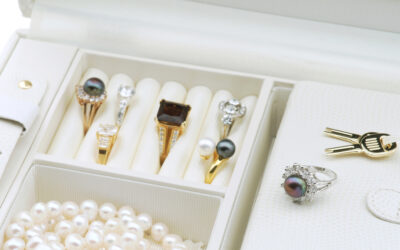Whether it’s a set you received when you got married or a set you inherited from Grandma Lucy, china is precious and fragile.
So, how do you store the dishes to ensure they don’t wind up in bits and pieces?
First you want to place china in a protective wrap, ideally quilted dishware packs but if that’s not available something like packing paper, bubble wrap, foam sleeves, cloth napkins or even paper towels should work fine. After it’s wrapped, you’ll want to put your china in a cardboard box or plastic bin. Lastly, be sure to stack plates, platters and bowls on their side, never on top of each other.
Read below for additional tips on how to store your china.
Before you stash even one piece of china, consider how often you’ll use it, professional organizer Amanda Scudder said. “While it is lovely to have a few pieces of a treasured china set on display, it is rarely practical to have it all out,” she said.
If you’re inclined to use the china on a regular basis, make room for it in your kitchen cabinets, Scudder said. If you’re apt to haul it out only for special occasions, keep the china in a corner cabinet or dining-room sideboard. A clean, dry shelf in the attic or basement is another option.
Wherever you decide to put infrequently used china, place packing paper, bubble wrap, foam sleeves, paper towels or cloth napkins between the plates to protect the delicate glaze, Scudder said. Drape a dishcloth over the china to shield it from dust.
Quilted Cases
For longer-term storage of china, “the simplest and most secure way to protect it from chips, nicks and discoloration is to place your set in quilted dishware packs,” professional organizer Mridu Parikh said.
These zippered packs are available at stores like Target, Walmart and Bed, Bath & Beyond, and come in different sizes to accommodate plates, platters, bowls, servers, cups, saucers and other items.
“Look for sturdy cases that have a clear window for a label. Insert a list or picture of the contents in the clear window for easy location of the contents,” Scudder said.
Most storage cases include cut-to-size protective sheets to put between plates, and cardboard grids to separate cups and mugs, Scudder said.
Before putting your china in the appropriately sized pack, wrap each piece in acid-free tissue paper to prevent discoloration, Parikh said. Then, place a layer of bubble wrap or protective cushioning between each plate to avoid scraping, scratching or cracking.
Storage Alternatives
If you don’t want to fork over the money for a dishware pack, you can store your china in a cardboard box or plastic bin, according to Parikh and Scudder. But be sure to line it with bubble wrap or crumpled packing paper and follow the other steps.
As an alternative to bubble wrap or paper, interior designer Jenna Pizzigati-Coppola recommends wrapping your china in holiday-themed quilts, blankets or linens.
“Generally, your finer dining pieces only make an appearance once a year during the holidays for entertaining. So as soon as the season is over, it’s easy to pack up your holiday dining accessories as well as your festive blankets and linens at the same time,” Pizzigati-Coppola said.
What if you’re keeping the china simply for the sake of keeping it and it’s merely taking up space? Scudder suggests asking yourself whether it’s worth storing in the first place.
“If the china isn’t useful to you, if you don’t find it beautiful, or it doesn’t evoke good feelings or memories, it may be time to let it go,” she said.
Storage Strategies
Here are five other tips from Scudder for storing china:
- Always stack plates, platters and bowls on their sides, like a loaf of bread—not like a stack of pancakes.
- Place enough wrap or paper between each item to prevent the pieces from touching directly.
- Keep in mind that china is heavy, so use small or medium-size containers to store it. “Your dishes and your back will thank you,” she said.
- If you store your china in cardboard boxes, don’t stick the boxes in areas that are likely to attract pests, as bugs and rodents devour cardboard.
- Label the boxes or bins with the pattern, type and quantity of the contents so you don’t need to unwrap each piece to find out what’s inside.
Post updated by SpareFoot, 1/30/2017.



